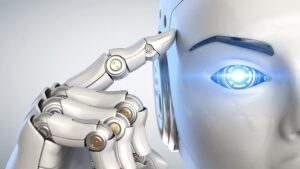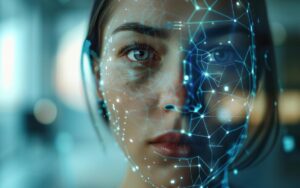Have you ever wondered about the nuts and bolts of machine learning? How does it work, and what kinds of formulas or algorithms does it use? Since the more we understand something, the more effective a tool can be, let’s look at one process element: Bayesian machine learning.
This article discusses the role of the Bayesian Theorem in machine learning and its importance. We will also touch on Bayesian learning, the Bayesian belief network, the Theorem itself, and how to gain practical skills using Bayesian learning in machine learning through an online AI ML program.
But before we get immersed in detail, let’s define Bayesian machine learning.
What is Bayesian Learning?
Simply put, Bayesian learning uses Bayes’ Theorem to figure out a hypothesis’s conditional probability given a limited amount of observations or evidence. Bayesian learning offers a principled mechanism that allows previous knowledge to be incorporated into a model.
Here are the salient features of the Bayesian learning method:
- Each observed training example could incrementally increase or decrease the estimated probability that a given hypothesis is correct. This feature offers a more flexible approach to learning, as opposed to algorithms that totally eliminate a hypothesis if it’s found to be inconsistent with any one example.
- Previous knowledge can be combined with observed data to calculate the final probability of a hypothesis. In the context of Bayesian learning, this prior knowledge is provided by asserting:
- an earlier probability for each candidate hypothesis
- a probability distribution over the observed data for every possible hypothesis
- Bayesian learning methods can accommodate a hypothesis that makes probabilistic predictions.
- New instances can be classified by combining the predictions of different hypotheses, weighted by their probabilities.
- Even when Bayesian methods are computationally intractable, they can still provide a standard of optimal decision-making that you can measure other practical methods against.
The above definition begs the question: what is the Bayes Theorem in machine learning?
So, What is Bayes Theorem?
Bayes Theorem is a mathematical formula that aids us in determining the chance an event will occur based on our previous knowledge of similar, related events. Or, to put it in simpler terms, Bayes Theorem helps us adjust our opinions or hypotheses about the likelihood of an event happening, considering the data or facts we have gained. Bayes Theorem is stated in mathematics like this:
P(A|B) = P(B|A) x P(A)/P(B)
Now, let’s break down the formula.
The conditional probability that event A will occur if event B has already occurred is rendered as P(A|B). On the other hand, P(B|A) is the conditional probability of event B, assuming that event A has already occurred.
P(A) symbolizes the earlier probability that event A will happen, while P(B) represents the probability that event B occurs.
So, according to the Theorem, the probability of event A occurring given evidence B is calculated by multiplying the likelihood of evidence B given the occurrence of the A event by the previous probability of event A and dividing the result by B’s prior probability.
Now, it’s time to dive deeper into the mechanics of Bayes Theorem and its use in machine learning.
A Bayes Theorem Deep Dive
In machine learning, data scientists try to ascertain the best hypothesis from a certain hypothesis space H, given the observed training data D. In the context of Bayesian learning, the best hypothesis means the most likely hypothesis, given the data D plus any previous knowledge about the prior probabilities of the various hypotheses in H.
Bayes theorem offers a means of calculating the probability of a hypothesis based on its previous probability, the probabilities of observing different data given the hypothesis, and the observed data itself.
Here are the variables:
- P(h) is the prior probability or likelihood of hypothesis h. P(h) represents the initial probability hypothesis that h holds true before observing training data. Additionally, P(h) may reflect any background knowledge gained about the chance that h is correct. If there is no prior knowledge, each candidate hypothesis may receive the same prior probability.
- P(D) is the prior probability of training data D. This is the probability of D given no knowledge about which hypothesis holds.
- P(D|h) indicates the posterior probability of D given h. P(h|D) is the posterior probability of h because it reflects our confidence that h holds true even after seeing the D training data. The posterior probability P(h|D) reflects training data D’s influence, in contrast to the prior probability P(h), independent of D.
- P(D|h) is the posterior probability of D given h. This value reflects the probability of observing data D, given some world in which hypothesis h holds. We would generally write P(xly) to show the probability of event x given event y.
In machine learning problems, the data scientists are interested in the probability P(h|D) that h holds given the observed training data D. Consequently, Bayes theorem offers a way to calculate the posterior probability P(h|D), from the prior probability P(h), together with P(D) and P(D|h).
According to Bayes’s Theorem, P(h|D) increases with P(h) and P(D|h). Also, P(h|D) decreases as P(D) increases since the more probable it is that D gets observed independent of h, the less evidence D provides to support h.
Now that we’ve gotten a Bayesian learning overload, let’s explore the Bayesian belief network in machine learning.
What’s a Bayesian Belief Network, and How Does it Apply to Machine Learning?
The Bayesian belief network, also called a Bayes network, decision network, belief network, or Bayesian model, is a probabilistic graphical model showing a given set of variables plus their conditional dependencies using a directed acyclic graph.
Bayesian networks are probabilistic because they are built from probability distributions and use probability theory for anomaly detection and prediction. Applications in the real world are probabilistic, so you need a Bayesian network to represent the relationship between multiple events. The network can be used in many diverse tasks, including anomaly detection, prediction, time series prediction, automated insight, diagnostics, reasoning, and decision-making under uncertainty.
So, a Bayesian network can build models from expert opinions and previous data, and these models can contribute to the overall process of machine learning. Let’s look at Bayesian learning’s role in the machine learning process.
The Role of Bayesian Learning in Machine Learning
The Bayes Theorem is an important machine learning approach because it allows past information and beliefs to be factored into statistical models. The Bayes Theorem can be used to resolve classification problems, Bayesian networks, and Bayesian inference, among many others.
- Classification Problems. Regarding classification problems, the Bayes Theorem can calculate the chance that a new data point will fall into a particular class depending on the data’s characteristics. For example, the Bayes Theorem can be applied to determine whether an e-mail is spam by using the e-mail’s text and other pertinent information.
- Bayesian Networks. Bayesian networks graphically represent the probabilistic connections between variables. Given the values of other network variables, these models use the Bayes Theorem to determine the chance of a specific occurrence.
- Bayesian Inference. Bayesian inference is a statistical method that alters the probability of a hypothesis due to the presence of fresh data. This method calculates the hypothesis’s posterior probability using the Bayes Theorem, given the previous probability and the evidence’s likelihood.
Given all this information, it’s time we look at why Bayesian methods are essential by looking at the practical uses of the Bayes Theorem in machine learning. Note: you can gain practical experience using Bayesian learning in machine learning through online AI ML training.
Practical Applications of Bayesian Theorem in Machine Learning
Spam detection, picture recognition, medical diagnosis, and natural language processing (NLP) are only a few of the many machine learning tasks where the Bayes Theorem can be applied.
- Image Recognition. The Bayes Theorem is also used for identifying objects in photographs. Machine learning algorithms excel at classifying photographs and identifying objects by calculating the chance that an object will appear in a photograph based on its features.
- Medical Diagnosis. The Bayes Theorem is used in healthcare to determine the chances a patient has a specific condition based on their symptoms and previous medical history. As a result, the Theorem could help medical professionals achieve more accurate diagnoses and, therefore, prescribe the most valuable therapies.
- Natural Language Processing. The Bayes Theorem is widely used in natural language processing to calculate the likelihood that a particular word or phrase will be used in a given situation. Thus, the Theorem can benefit applications that require natural language processing, like speech recognition and machine translation.
- Spam detection. This bane of every user’s existence can be detected by employing the Bayes Theorem in machine learning techniques. Machine learning algorithms could use the Bayes Theorem to precisely detect unwanted e-mails and block them from reaching the user’s mailbox in the first place by calculating the likelihood that a message is spam.
Disadvantages of the Bayesian Method
Bayesian learning in machine learning has its drawbacks. After all, no method is perfect! Bayesian learning’s disadvantages are:
- The Bayesian method requires initial knowledge of many probabilities. If you don’t know these probabilities beforehand, they must often be estimated based on previous data, background knowledge, and assumptions about the underlying distribution forms.
- The Bayesian method requires a significant computational cost to determine the Bayes optimal hypothesis in the general case (e.g., linear in the number of candidate hypotheses). However, you can significantly reduce this computational cost in certain specialized situations.
Do You Want to Learn More About Machine Learning?
As you can infer from the above information, machine learning is a highly complex field. However, it offers many opportunities, job security, and excellent compensation. If you’re interested in a new career in machine learning or are already in the field and want to upskill, consider this outstanding six-month AI ML course. This post-graduate AI and ML course offers a high-engagement learning experience that covers generative AI, prompt engineering, Python, ML, NLP, and more.
And since there’s no such thing as knowing too much about machine learning, why not also look into this intense AI ML bootcamp? This 24-week bootcamp trains you in vital skills such as deep learning, ML, NLP, computer vision, generative AI, reinforcement learning, prompt engineering, ChatGPT, and more.
According to ZipRecruiter, machine learning engineers in the United States earn an average of $127,448 annually. AI and ML are the way of the future; secure your role in these fantastic innovations and use your newly acquired skills to set yourself up for an exciting new career.






